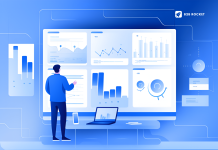In today’s rapidly evolving retail landscape, staying ahead of the competition requires more than just a good product and an attractive storefront. It demands a deep understanding of customer behavior, market trends, and operational efficiency. This is where retail analytics comes into play. By harnessing the power of data, retail businesses can gain valuable insights that drive informed decision-making and ultimately lead to success.
Understanding Retail Analytics
Retail analytics refers to the process of gathering, analyzing, and interpreting data related to various aspects of a retail operation. This includes customer behavior, sales trends, inventory management, and more. With the advent of advanced technologies and powerful software solutions, businesses now have the ability to collect and process immense volumes of data, providing them with a competitive edge in the market.
Optimizing Inventory Management
One of the key areas where retail analytics shines is in optimizing inventory management. By leveraging data on sales patterns, seasonal trends, and customer preferences, retailers can make informed decisions about stocking levels and product assortments. This prevents overstocking or understocking, which can lead to lost revenue or excess carrying costs. With retail analytics, businesses can strike the perfect balance between supply and demand, ultimately improving profitability.
Enhancing Customer Experience
Understanding customer behavior is crucial for any retail business. Retail analytics allows businesses to gain deep insights into customer preferences, purchasing habits, and even demographics. This information can be used to tailor marketing campaigns, create personalized shopping experiences, and offer product recommendations that are more likely to resonate with individual customers. By providing a more personalized experience, businesses can build stronger customer loyalty and increase sales.
Predictive Analytics for Strategic Planning
Retail analytics goes beyond historical data analysis. It also encompasses predictive analytics, which uses algorithms and machine learning to forecast future trends and behaviors. This enables retailers to make proactive decisions, such as adjusting pricing strategies, planning promotional events, and anticipating shifts in consumer demand. By staying ahead of the curve, businesses can position themselves to capitalize on emerging opportunities.
Optimizing Marketing Efforts
With retail analytics, businesses can track the performance of their marketing campaigns with precision. By analyzing metrics such as customer acquisition cost, conversion rates, and return on investment (ROI), retailers can identify which marketing channels and strategies are most effective. This information empowers businesses to allocate their marketing budget more efficiently, focusing on initiatives that deliver the highest return.
Staying Competitive in a Dynamic Market
The retail industry is known for its fast-paced and constantly changing nature. To thrive in this environment, businesses must be agile and adaptable. Retail analytics provides the tools and insights necessary to make data-driven decisions in real-time. This agility allows businesses to respond quickly to market shifts, customer preferences, and emerging trends, giving them a distinct competitive advantage.
In the competitive world of retail, having an edge can make all the difference. Retail analytics empowers businesses with the knowledge and insights needed to make informed decisions, optimize operations, and enhance customer experiences. By harnessing the power of data, retailers can navigate the dynamic landscape of the retail industry with confidence and success. Embracing retail analytics is not just an option; it’s a strategic imperative for any retail business looking to thrive in today’s market.












